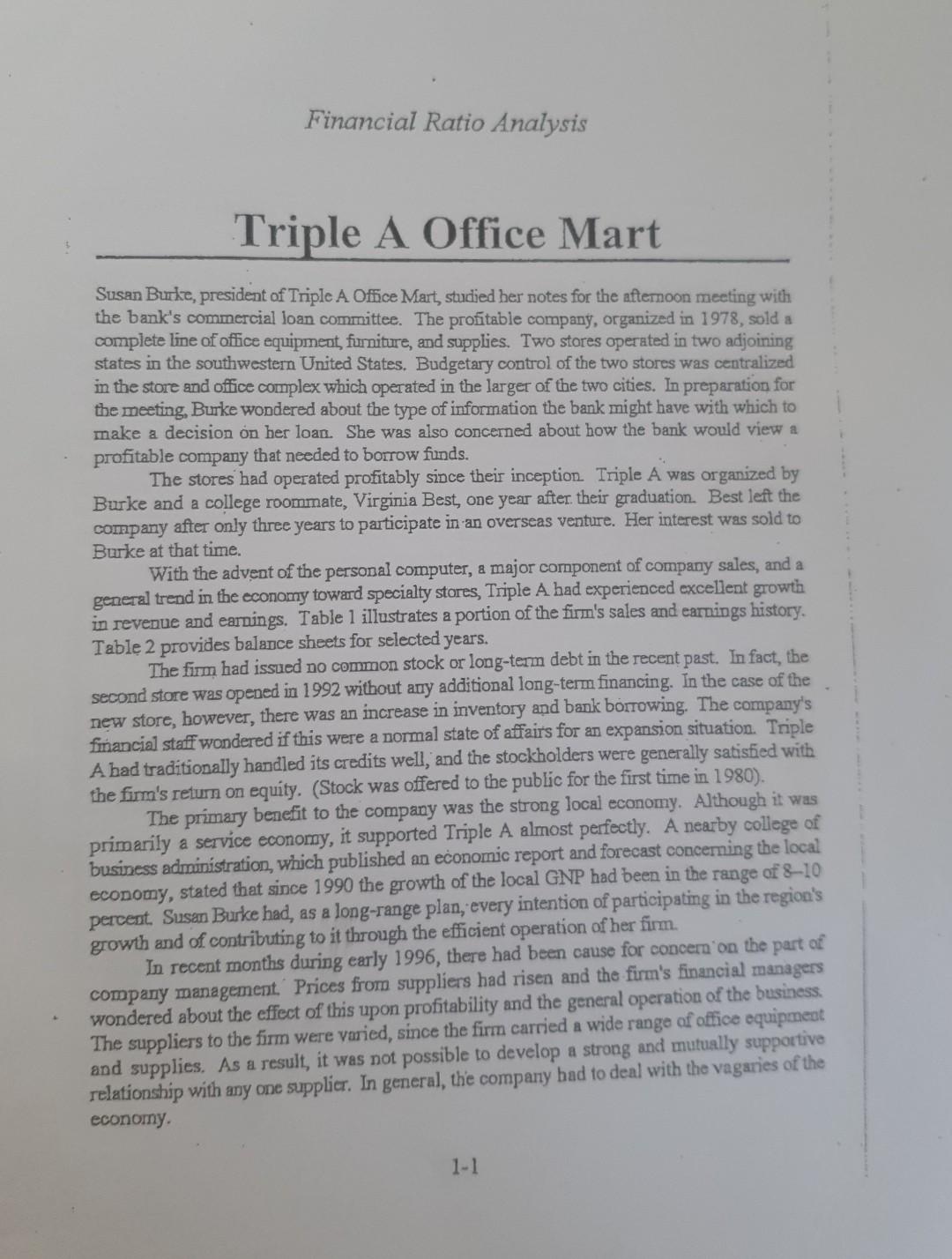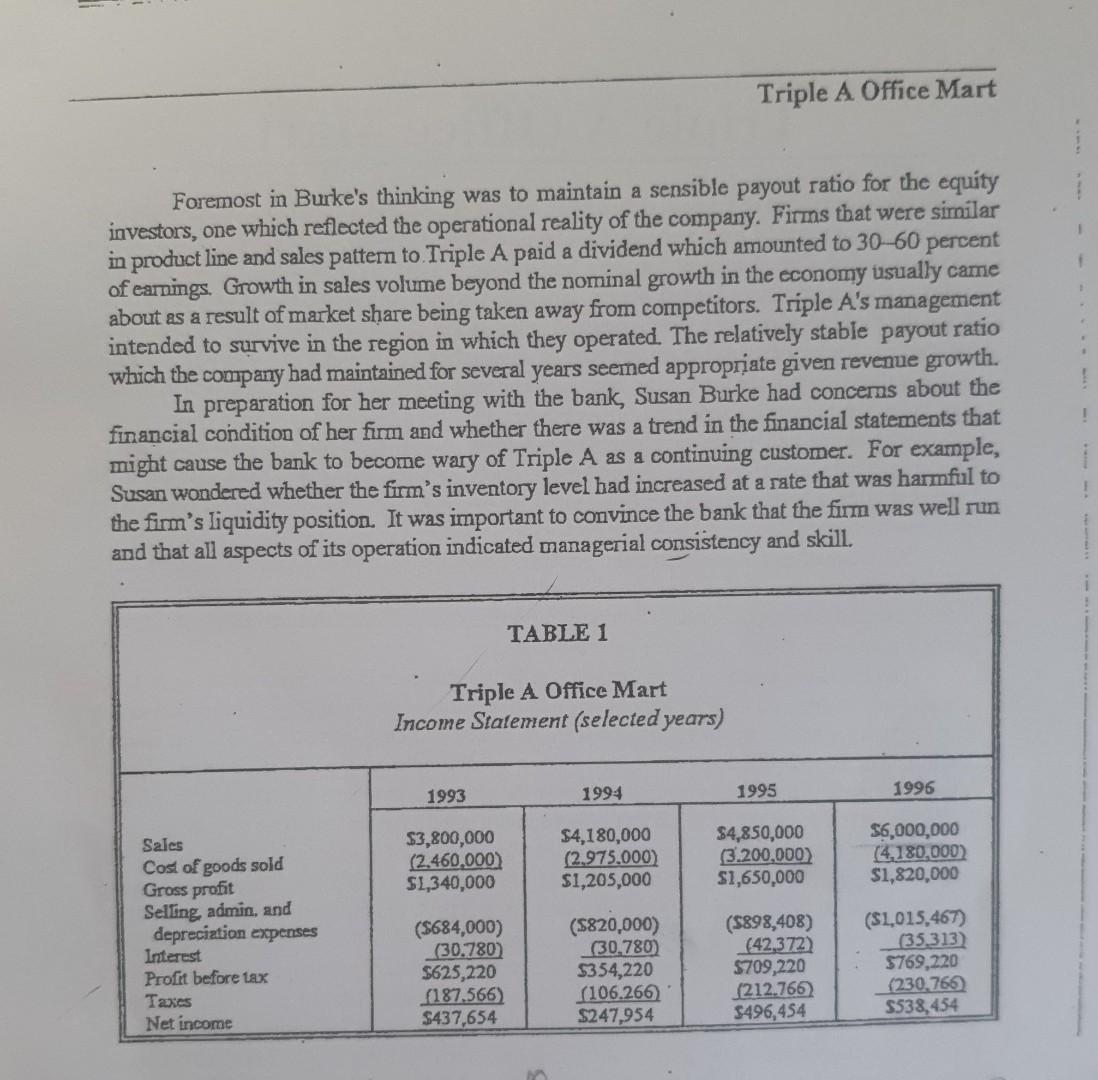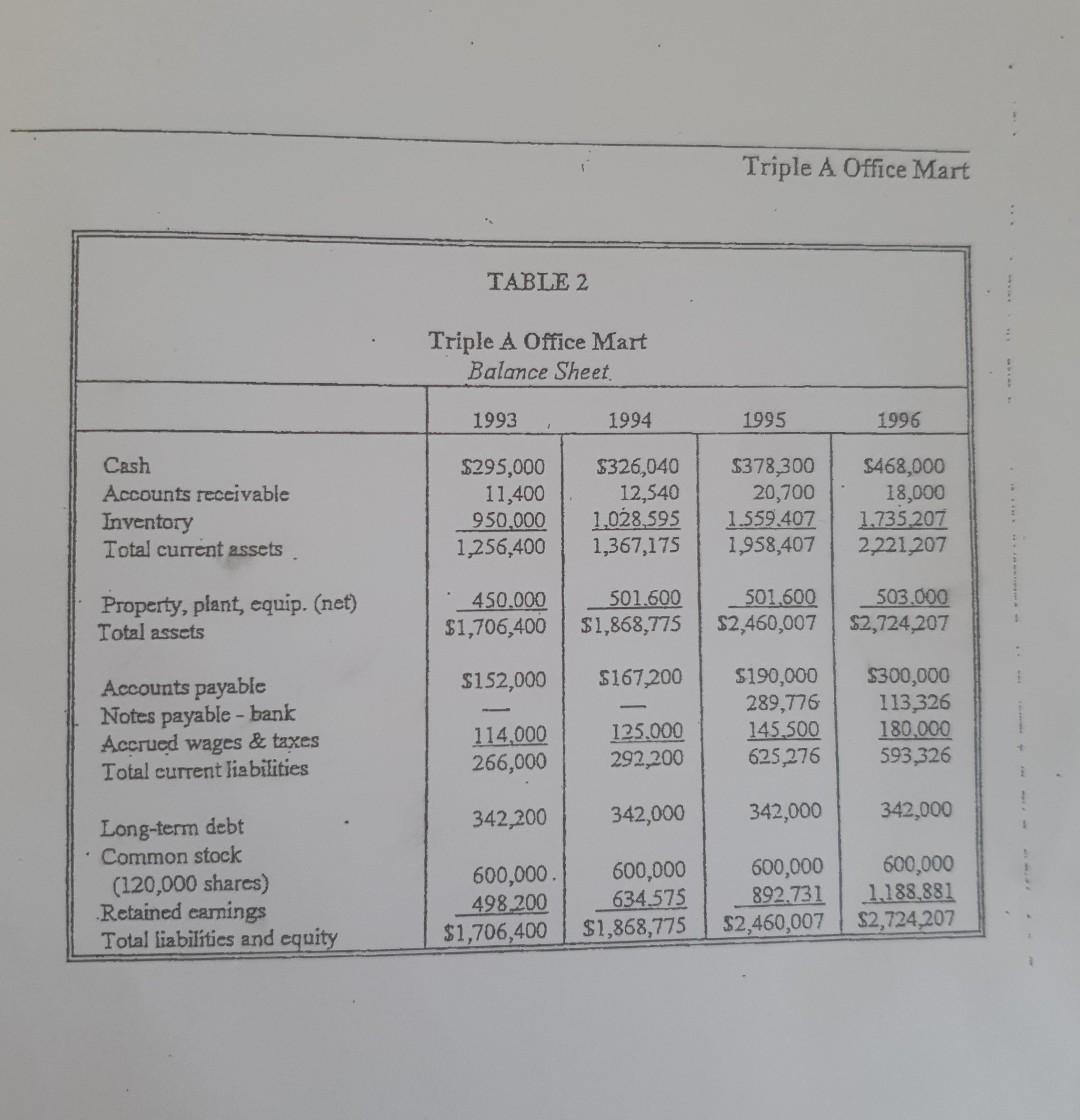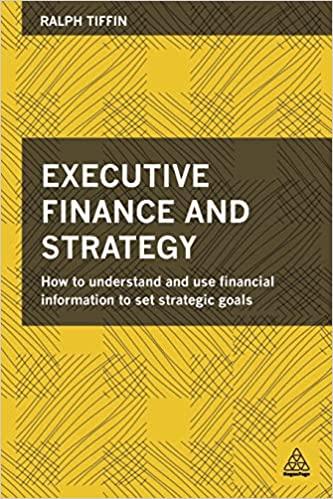Answered step by step
Verified Expert Solution
Question
1 Approved Answer
Q: Calculate the compound average annual growth rate in sales and profit after tax for Triple A. Financial Ratio Analysis Triple A Office Mart Susan



Q: Calculate the compound average annual growth rate in sales and profit after tax for Triple A.
Financial Ratio Analysis Triple A Office Mart Susan Burke, president of Triple A Office Mart, studied her notes for the afternoon meeting with the bank's commercial loan committee. The profitable company, organized in 1978, sold a complete line of office equipment, furniture, and supplies. Two stores operated in two adjoining states in the southwestern United States. Budgetary control of the two stores was centralized in the store and office complex which operated in the larger of the two cities. In preparation for the meeting, Burke wondered about the type of information the bank might have with which to make a decision on her loan. She was also concerned about how the bank would view a profitable company that needed to borrow funds. The stores had operated profitably since their inception Triple A was organized by Burke and a college roommate, Virginia Best, one year after their graduation. Best left the company after only three years to participate in an overseas venture. Her interest was sold to Burke at that time. With the advent of the personal computer, a major component of company sales, and a general trend in the economy toward specialty stores, Triple A had experienced excellent growth in revenue and earnings. Table 1 illustrates a portion of the firm's sales and earnings history, Table 2 provides balance sheets for selected years. The firm had issued no common stock or long-term debt in the recent past. In fact, the second store was opened in 1992 without any additional long-term financing. In the case of the new store, however, there was an increase in inventory and bank borrowing. The company's financial staff wondered if this were a normal state of affairs for an expansion situation. Triple A bad traditionally handled its credits well, and the stockholders were generally satisfied with the firm's return on equity. (Stock was offered to the public for the first time in 1980). The primary benefit to the company was the strong local economy. Although it was primarily a service economy, it supported Triple A almost perfectly. A nearby college of business administration, which published an economic report and forecast concerning the local economy, stated that since 1990 the growth of the local GNP had been in the range of 8-10 percent. Susan Burke had, as a long-range plan, every intention of participating in the region's growth and of contributing to it through the efficient operation of her firm. In recent months during early 1996, there had been cause for concern on the part of company management. Prices from suppliers had risen and the firm's financial managers wondered about the effect of this upon profitability and the general operation of the business. The suppliers to the firm were varied, since the firm carried a wide range of office equipment and supplies. As a result, it was not possible to develop a strong and mutually supportive relationship with any one supplier. In general, the company had to deal with the vagaries of the economy 1-1 Triple A Office Mart 1 - Foremost in Burke's thinking was to maintain a sensible payout ratio for the equity investors, one which reflected the operational reality of the company. Firms that were similar in product line and sales pattern to Triple A paid a dividend which amounted to 30-60 percent of earnings. Growth in sales volume beyond the nominal growth in the economy usually came about as a result of market share being taken away from competitors. Triple A's management intended to survive in the region in which they operated. The relatively stable payout ratio which the company had maintained for several years seemed appropriate given revenue growth. In preparation for her meeting with the bank, Susan Burke had concerns about the financial condition of her firm and whether there was a trend in the financial statements that might cause the bank to become wary of Triple A as a continuing customer. For example, Susan wondered whether the firm's inventory level had increased at a rate that was harmful to the firm's liquidity position. It was important to convince the bank that the firm was well run and that all aspects of its operation indicated managerial consistency and skill. ! ! TABLE 1 Triple A Office Mart Income Statement (selected years) 1993 1994 1995 1996 $3,800,000 (2.460.000) $1,340,000 $4,180,000 (2.975,000) $1,205,000 $4,850,000 (3.200,000) $1,650,000 $6,000,000 (4,180,000) $1,820,000 Sales Cose of goods sold Gross profit Selling, admin, and depreciation expenses Interest Profit before tax Taxes Net income ($684,000) (30.780) $625,220 (187,566) S437,654 (5820,000) (30.780) 5354,220 (106.266) $247,954 (5898,408) (42.372) 5709,220 (212.766 S496,454 (81,015,467) 35.313) 5769,220 (230.760 S538,434 Triple A Office Mart TABLE 2 Triple A Office Mart Balance Sheet 1993 1994 1995 1996 Cash Accounts receivable Inventory Total current assets $295,000 11,400 950.000 1,256,400 $326,040 12,540 1,028,595 1,367,175 $378,300 20,700 1.559.407 1,958,407 S468,000 18,000 1.735 207 2.221.207 Property, plant, equip. (net) Total assets 450.000 $1,706,400 501.600 $1,868,775 501,600 $2,460,007 503.000 $2,724,207 $152,000 $167,200 Accounts payable Notes payable-bank Accrued wages & taxes Total current liabilities $190,000 289,776 145.500 625,276 $300,000 113326 180,000 593,326 114,000 266,000 125.000 292,200 342,200 342,000 342,000 342,000 Long-term debt Common stock (120,000 shares) Retained earnings Total liabilities and equity 600,000 498,200 $1,706,400 600,000 634.575 $1,868,775 600,000 892.731 $2,460,007 600,000 1.188,881 $2,724,207Step by Step Solution
There are 3 Steps involved in it
Step: 1

Get Instant Access to Expert-Tailored Solutions
See step-by-step solutions with expert insights and AI powered tools for academic success
Step: 2

Step: 3

Ace Your Homework with AI
Get the answers you need in no time with our AI-driven, step-by-step assistance
Get Started


